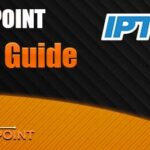Accessing your retirement funds in a John Hancock 401k requires a clear understanding of the withdrawal process and the specific rules of your retirement plan. When it comes to taking money out of your 401k, there are various options available, each with its own implications and considerations.
Before making any decisions, it’s crucial to familiarize yourself with the rules and conditions set forth in your John Hancock 401k plan. This will ensure that you navigate the withdrawal process correctly and avoid any unnecessary penalties or taxes.
Understanding the rules and conditions of your John Hancock 401k plan is essential before making a withdrawal.
Withdrawal options include requesting a withdrawal, taking a loan, or applying for a hardship withdrawal.
Early withdrawals may incur a 10% penalty, unless you meet certain exceptions like death, disability, or medical expenses.
Taking a loan from your 401k can have pros like avoiding income tax or penalty fees, but cons like potential loss of investment gains.
Hardship withdrawals are taxable income and may come with a 10% early withdrawal penalty.
When leaving your job, you can choose to keep your money in the 401k, roll it over to a new employer’s plan or an IRA, or take the cash.
Consulting a financial professional or tax advisor is recommended to fully understand your options and make informed decisions.
Exploring Your John Hancock 401k Withdrawal Options
When it comes to making a withdrawal from your John Hancock 401k, you have several options that are governed by the rules and conditions set by your retirement plan. It’s essential to familiarize yourself with these options to make informed decisions about accessing your retirement funds.
One option available to you is requesting a withdrawal from your 401k. Whether it’s a partial or full withdrawal, it’s crucial to understand that withdrawals made before the age of 59½ may be subject to a 10% early withdrawal penalty unless certain exceptions apply, such as death, disability, or certain medical expenses. Additionally, any withdrawal from your 401k is considered taxable income, so it’s important to plan accordingly.
Another option to consider is taking a loan from your qualified retirement plan. With this option, you essentially become both the borrower and the lender. While it may provide some benefits like no income tax or penalty fees, it’s important to note that you may potentially lose out on investment gains on the money withdrawn. Therefore, carefully weigh the advantages and disadvantages before opting for this route.
If you’re facing immediate and heavy financial needs, you may be eligible for a hardship withdrawal. However, it’s crucial to understand that hardship withdrawals are taxable income and may incur a 10% early withdrawal penalty. It’s advisable to thoroughly evaluate your situation and explore alternative solutions before considering this option.
When it comes to your retirement, it’s vital to make informed decisions based on your specific circumstances. If you’re uncertain about the best course of action, consulting a financial professional or tax advisor can provide personalized guidance tailored to your needs. They can help you navigate the various withdrawal options available to you and ensure that you understand the tax implications and potential penalties associated with each choice.
Understanding 401k Early Withdrawal Rules
Making an early withdrawal from your 401k can result in penalties, including a 10% early withdrawal penalty, unless you meet certain exceptions outlined in the rules. These exceptions include death, disability, or certain medical expenses. It’s important to understand the specific guidelines set forth by your retirement plan to ensure compliance and avoid unnecessary penalties.
One exception to the early withdrawal penalty is for individuals who experience a financial hardship. Hardship withdrawals are reserved for immediate and heavy financial needs, such as medical expenses or preventing eviction from your primary residence. However, it’s essential to note that hardship withdrawals are considered taxable income and may also incur the 10% early withdrawal penalty.
If you find yourself in a situation where you need to access your retirement funds early, it’s advisable to explore all available options before making a decision. Consulting with a financial professional or tax advisor can provide valuable guidance based on your specific circumstances. They can help you understand the potential consequences of an early withdrawal and explore alternative solutions that may better suit your needs.
Early Withdrawal Rules
Exceptions
Withdrawals made before the age of 59½ are subject to a 10% early withdrawal penalty.
Exceptions include death, disability, or certain medical expenses.
Hardship withdrawals are reserved for immediate and heavy financial needs.
Hardship withdrawals are considered taxable income and may incur a 10% early withdrawal penalty.
Consulting a financial professional or tax advisor can provide personalized advice based on your circumstances.
Seeking professional guidance can help you understand the potential consequences of an early withdrawal.
“It’s important to thoroughly review the rules and exceptions surrounding early withdrawals from your 401k before making any decisions. Taking the time to understand your options and consult with a professional can help you make an informed choice that aligns with your long-term financial goals.” – Financial Advisor
Taking a loan from your John Hancock 401k can be a viable option when you need funds, allowing you to avoid income tax and penalty fees. However, it’s important to carefully consider the potential impact on your investment gains.
When you take a loan from your 401k, you become both the borrower and lender. This means that while you are paying interest on the loan, you are also paying that interest back to your own retirement account. Unlike other types of loans, the interest you pay on a 401k loan is not tax-deductible.
One advantage of a 401k loan is that the process is typically quick and easy, with minimal paperwork required. Additionally, the interest rates on a 401k loan are often lower than those of other types of loans. This can make it an attractive option for individuals who need funds quickly and want to avoid the potential credit implications of borrowing from a traditional lender.
On the flip side, it’s important to remember that by taking a loan from your 401k, you are removing money from your retirement savings. This can result in missed investment gains, potentially impacting your long-term retirement goals. Additionally, if you leave your job before repaying the loan in full, the remaining balance may become due, and failure to repay it can result in taxes and penalties.
Pros
Cons
– Avoid income tax and penalty fees
– Quick and easy process
– Lower interest rates compared to other loans
– Loss of potential investment gains
– Remaining balance due if you leave your job
– Tax and penalty consequences if not repaid
Before deciding to take a loan from your John Hancock 401k, it is important to carefully consider your financial situation and consult with a financial professional or tax advisor. They can help you assess the potential impact on your retirement savings and provide guidance on whether a 401k loan is the right choice for you.
Understanding John Hancock 401k Hardship Withdrawals
If you find yourself in an immediate and heavy financial need, a hardship withdrawal from your John Hancock 401k may be an option, but it’s essential to understand the specific criteria and potential consequences.
Hardship withdrawals are reserved for individuals facing specific financial hardships, such as medical expenses, tuition fees, or the prevention of eviction or foreclosure. However, it’s important to note that hardship withdrawals are subject to income tax and may also incur a 10% early withdrawal penalty unless you qualify for an exception.
While a hardship withdrawal can provide relief during challenging times, it’s crucial to consider the long-term impact on your retirement savings. The money withdrawn will no longer be invested, potentially affecting the growth of your 401k. Additionally, once you take a hardship withdrawal, you may be restricted from contributing to your 401k for a certain period of time.
If you are considering a hardship withdrawal, it’s crucial to thoroughly review your John Hancock 401k plan guidelines to determine if you meet the eligibility criteria. Consulting a financial professional or tax advisor can also provide valuable insight into the potential consequences and alternatives available to you.
Pros
Cons
No income tax
Potential loss of investment gains
No penalty fees
Restrictions on future contributions
Immediate financial relief
Income tax and potential penalties
Key Considerations for Hardship Withdrawals
Verify if your financial situation meets the specific criteria outlined in your John Hancock 401k plan.
Understand the tax implications and potential penalties associated with a hardship withdrawal.
Weigh the advantages and disadvantages of taking a hardship withdrawal, considering the potential impact on your retirement savings.
Explore alternative options such as loans, budgeting adjustments, or seeking other forms of financial assistance.
Navigating John Hancock 401k Distributions
As you approach retirement, understanding the process of receiving distributions from your John Hancock 401k is crucial for effectively managing your retirement funds. When it comes to accessing your hard-earned savings, there are a few important considerations to keep in mind.
Firstly, it’s essential to be aware of the specific rules and conditions set forth in your retirement plan. These rules can vary between different employers and plans, so familiarizing yourself with the details of your John Hancock 401k is essential. This knowledge will help you navigate the distribution process smoothly and avoid any unexpected surprises.
Secondly, it’s important to know that there are various options available to you when it comes to receiving distributions from your 401k. These options can include lump-sum payments, periodic payments, or annuity options. Each option has its own advantages and considerations, so it’s important to carefully evaluate which one best aligns with your retirement goals and financial needs.
To assist you in making an informed decision, John Hancock provides resources such as calculators and retirement planning tools. These tools can help you estimate the potential impact of different distribution options on your retirement funds. Additionally, consulting a financial professional or tax advisor can provide personalized guidance based on your unique circumstances.
By understanding the process and exploring your options for receiving distributions from your John Hancock 401k, you can make informed decisions that will help you effectively manage your retirement funds and achieve your long-term financial goals. Remember, it’s never too early to start planning for retirement and ensuring a secure future for yourself and your loved ones.
Be aware of the rules and conditions of your John Hancock 401k for a smooth distribution process.
Explore the various distribution options available to you and evaluate which one aligns with your retirement goals.
Utilize resources such as calculators and retirement planning tools to estimate the impact of different distribution options.
Consult a financial professional or tax advisor for personalized guidance and advice.
By following these steps, you can navigate the process of receiving distributions from your John Hancock 401k with confidence and make decisions that will help you secure a comfortable retirement.
Exploring John Hancock 401k Rollover Options
When you leave your job, it’s important to consider the various options for rolling over your John Hancock 401k, ensuring that your retirement funds continue to grow and remain accessible. These options include keeping your money in the 401k, rolling it over to a new employer’s plan or an Individual Retirement Account (IRA), or taking the cash distribution.
Keeping your money in the 401k can be a good option if your new employer allows for incoming rollovers. This keeps your retirement savings in a tax-advantaged account and allows it to continue growing. However, it’s important to review the investment options and fees associated with the plan to ensure they align with your financial goals.
Another option is to roll over your 401k funds to a new employer’s plan. This allows you to consolidate your retirement savings into a single account and potentially take advantage of any employer matching contributions. It’s important to research and compare the investment options and fees of the new plan to ensure it meets your needs.
Alternatively, you can choose to roll over your 401k funds into an IRA. This provides you with more control over your investments and potentially a wider range of investment options. It also allows you to consolidate multiple retirement accounts into a single IRA, simplifying your financial management. However, it’s important to consider any fees associated with maintaining an IRA.
Before making any decisions, it’s recommended to consult a financial professional or tax advisor who can help you navigate the complexities of rolling over your John Hancock 401k. They can provide personalized advice based on your specific circumstances and help you make the best choice for your retirement future.
Understanding Taxes and Penalties for 401k Early Withdrawals
Making an early withdrawal from your 401k may come with tax implications and potential penalties that could significantly impact your retirement funds, so it’s crucial to be aware of these consequences. When you withdraw funds from your 401k before the age of 59½, you may be subject to a 10% early withdrawal penalty, in addition to any applicable income taxes.
However, there are certain exceptions to this penalty. For example, if you become permanently disabled, you may be exempt from the penalty. Additionally, using the funds for certain medical expenses, such as unreimbursed medical costs exceeding 10% of your adjusted gross income, may also qualify for an exception. It’s important to consult a tax advisor or financial professional to determine if you meet any of these exceptions.
To avoid the early withdrawal penalty, it’s generally recommended to keep your funds in your 401k until you reach the age of 59½. By doing so, you can take advantage of the tax-deferred growth within your retirement account.
Table 1: Summary of 401k Early Withdrawal Taxes and Penalties
Age at Withdrawal
Early Withdrawal Penalty
Income Tax
Under 59½
10%
Subject to income tax
59½ and above
N/A
Subject to income tax
It’s important to note that even if you are exempt from the early withdrawal penalty, the funds you withdraw will still be subject to income tax. This means that you may owe taxes on the amount withdrawn, which could impact your overall tax liability for the year. It’s advisable to consult a tax professional to determine the exact tax implications of an early withdrawal from your 401k.
Remember, your 401k is designed to help you save for retirement, and early withdrawals should be considered as a last resort. Taking funds out before retirement can significantly impact your long-term financial goals. Before making any decisions regarding your 401k, it’s important to consult with a financial professional who can provide personalized advice based on your individual circumstances.
Navigating John Hancock 401k Withdrawal Forms
Requesting a withdrawal from your John Hancock 401k involves completing the necessary forms accurately, and this section will guide you through the process and provide resources for obtaining the required documentation. It’s essential to ensure that you are using the correct forms and providing all the necessary information to avoid delays or complications in processing your withdrawal request.
To start, you will need to obtain the withdrawal forms specific to your John Hancock 401k plan. These forms can typically be found on the John Hancock website or by contacting the customer service department directly. Make sure to download or request the most up-to-date version of the forms to ensure compliance with the latest regulations and requirements.
Once you have the forms in hand, take the time to carefully read through the instructions and fill them out accurately. Pay close attention to any sections that require additional documentation, such as proof of identifying information or supporting evidence for hardship withdrawals. Providing all the necessary information upfront will help expedite the processing of your withdrawal request.
When completing the forms, it’s important to fill in all required fields, double-check for accuracy, and sign and date the documents where indicated. If you have any questions or are unsure about how to fill out a particular section, don’t hesitate to reach out for assistance. John Hancock’s customer service representatives can provide guidance and answer any questions you may have regarding the withdrawal forms.
Resources for Obtaining the Required Documentation
To ensure a smooth withdrawal process, gather all the necessary documentation before submitting your forms. This may include a copy of your government-issued ID, such as a driver’s license or passport, to verify your identity. Additionally, if you are applying for a hardship withdrawal, you may need to provide supporting documentation, such as medical bills or proof of eviction or foreclosure.
Consult your John Hancock 401k plan’s guidelines or contact the customer service department to determine the specific documentation requirements for your withdrawal request. By preparing and providing all the necessary documentation upfront, you can avoid delays and ensure that your withdrawal is processed promptly.
Documents Required
How to Obtain
Government-issued ID
Make a copy of your driver’s license or passport
Supporting Documentation (if applicable)
Gather medical bills, eviction notices, or other relevant evidence





